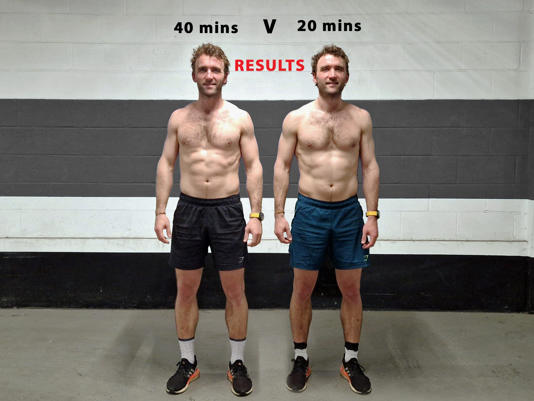
Ross and Hugo Turner are identical twins who conduct fitness experiments on themselves.
For 12 weeks, Hugo worked out for 20 minutes and Ross did twice as much, exercising for 40 minutes.
Their physiques, strength, and fitness improved almost exactly the same amount.
The identical twins Hugo and Ross Turner — known as the Turner Twins — are no strangers to a challenge.
The professional adventurers have done all sorts of things in a bid to explore every
corner of the world. They have rowed the Atlantic, climbed Mount Elbrus, and trekked Greenland’s polar ice cap. They’re currently trying to reach the most remote locations on each continent and ocean on the planet.
But they are equally fascinated by the human body. In between their expeditions,
the twins, 34, carry out experiments on themselves to understand how two genetically identical people react to different diets and workout regimes. Their latest challenge is designed to test whether working out for longer is more beneficial than short spurts of exercise.
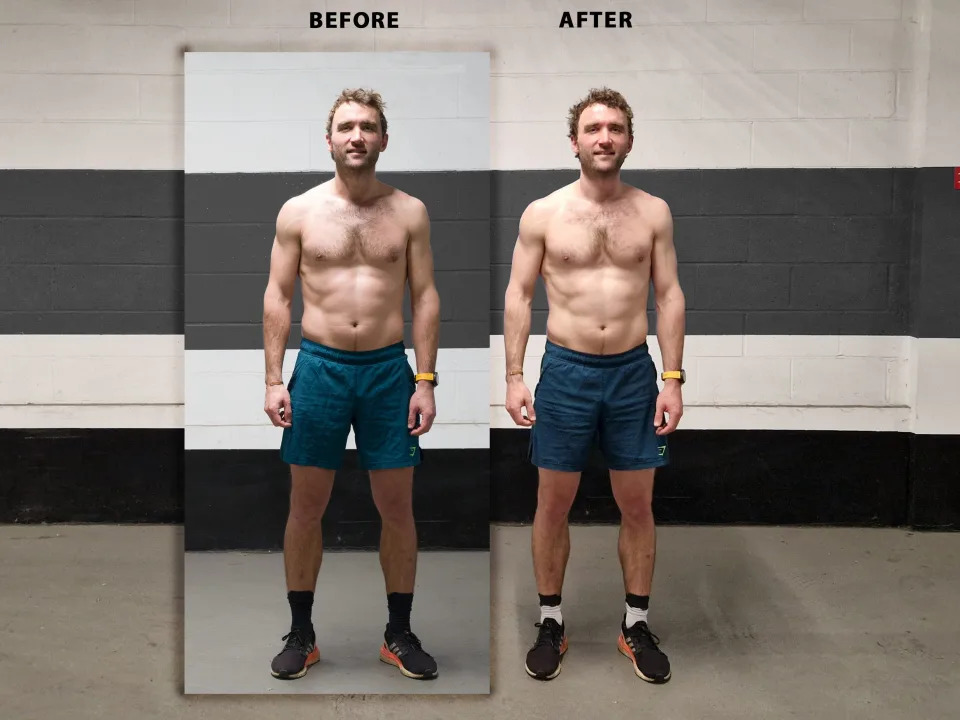
Hugo, who worked out for 20 minutes, before and after the experiment. ©
Hugo worked out for 20 minutes at a time, and Ross worked out for 40 minutes.
They compared their strength, fitness, and body composition over 12 weeks.
Ross told Insider that their results were “eye-opening.” Despite working out twice as much as his twin brother for three months, Ross said he saw next to no difference between their physiques or physical performances at the end of the experiment.
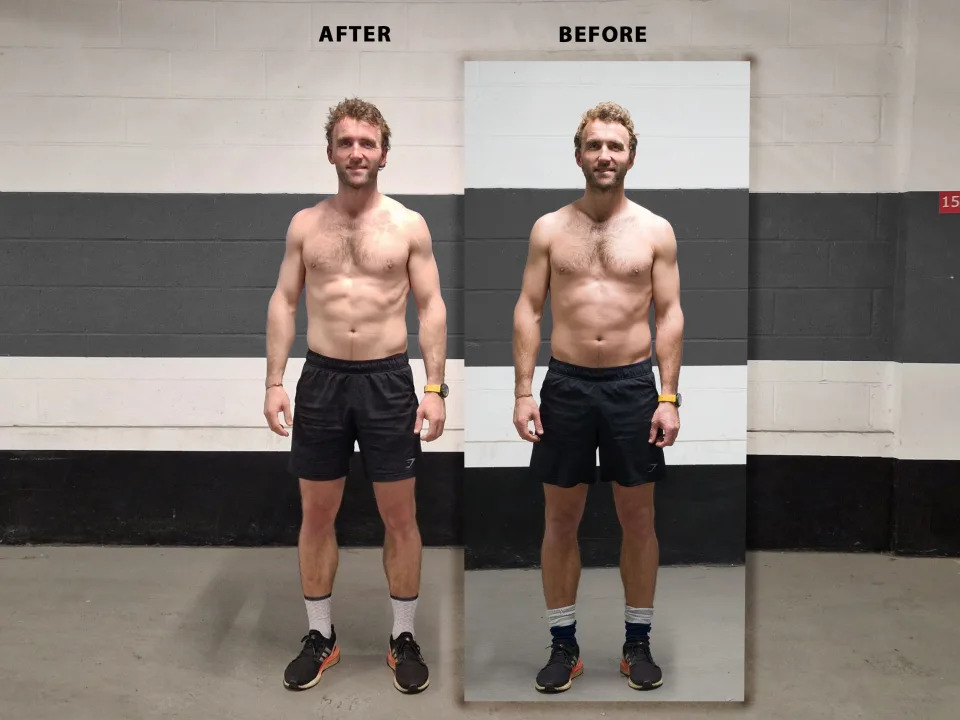
Ross before and after working out for 40 minutes for 12 weeks. The Turner Twins©
They did the same strength-building workout, but Ross did twice as many reps
The twins, who are based in London, followed their usual identical diet — they are usually together so they eat practically the same thing. They didn’t track their food but estimated that they were eating about 2,000-2,500 calories a day.
In each session, the twins would do a 20-minute workout together, which typically involved four exercises. When Hugo finished, Ross would repeat the workout again.
They generally worked out for two or three consecutive days before taking a rest day.
The twins lifted the same weights and performed the same number of reps.
They performed four sets of each exercise in the higher rep range of 14 to 16 as this build’s endurance, which is important for their expeditions — rather than lifting heavier weights with fewer reps, which aids strength-building.
How they measured the experiment
Ross and Hugo weighed themselves at the start and the end of the experiment. Ross was about three pounds heavier than Hugo to start with. They also noted their one-rep-max
for a deadlift and a bench press — the heaviest weight they could perform for one rep —
and how many push-ups and pull-ups they each could do.
Does Training for Double the Time Result in Double the Gains? A Twins Study | Watch
Next, they measured their “VO2 submaximal” — a measure of cardiovascular fitness —
by cycling on an exercise bike with the same resistance level for 15 minutes at a set speed while measuring their heart rates.
Lastly, they took a body scan every time they went to the gym to measure their weight and body composition.
A shorter workout was just as beneficial, they concluded
“The biggest finding was that we didn’t really find a huge amount of performance difference between 20 or 40 minutes, if at all,” Ross said.

Hugo and Ross’ fitness tests at the start and the end of their 12-week challenge.
The Turner Twins©
Each twin was able to do one more pull-up than usual by the end of the experiment, despite not doing any specific pull-up-focused training. They lifted the same amount
when they compared deadlifts at the end, too.
Hugo — who was on the lighter workout regime — managed 13 more push-ups at the end compared to when he first started, while Ross only did two more, despite exercising more for three months. Ross, however, increased his max bench press by 5 kilograms, or about 11 pounds, more than his brother.
As for their cardio fitness, Hugo’s heart rate at the end of the experiment was higher than Ross’, who worked out for longer. A lower heart rate is a sign of greater cardiovascular fitness, so Ross said the longer workouts made him fitter than his brother.
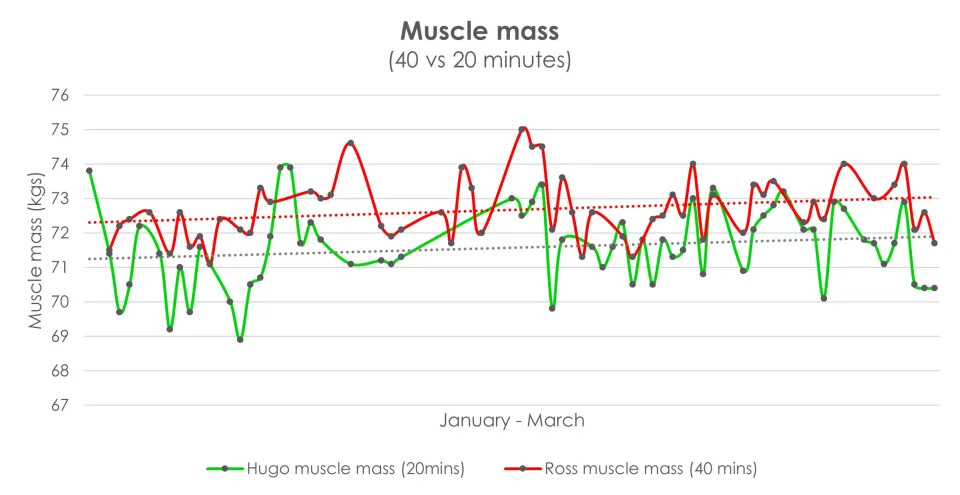
Hugo and Ross both gained muscle during the 12-week challenge. The Turner Twins©
Their muscle mass increased at the same rate, but Ross gained slightly more weight overall.
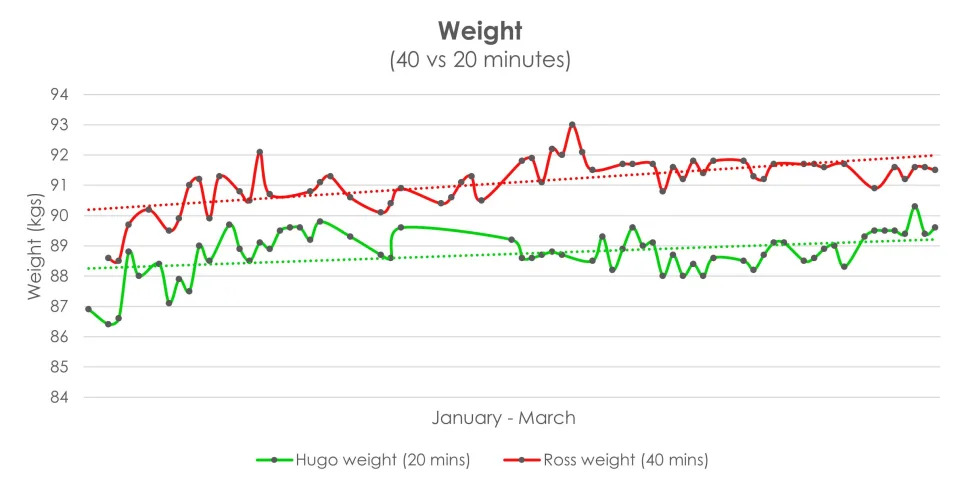
Hugo and Ross’ weights during the 12-week experiment. The Turner Twins©
Ross — who did double the work — couldn’t believe it
After working out twice as much, with nowhere near twice the results, Ross was frustrated.
“I’ve put in double the work,” he said. “I’ve lifted 16 hours extra over the 12 weeks.
Am I seeing any results that I would say are worth doing? Not at all.”
But he doesn’t regret the challenge — in fact, he said that everyone should experiment
with their workout regimes. “You’ll learn far more for the rest of your life and be far more informed than if you did five years of just doing a gym program because somebody told you to,” Ross told Insider.
He said the two of them would probably get the best results by working out for 20 to 25 minutes but perhaps upping the weights — in the experiment, they lifted weights based on what Ross would be able to do for 40 minutes, and so, in a 20-minute workout, they would be able to lift heavier without fatiguing.
A sports scientist said the results aligned with some larger studies.
Michael Graham, a senior lecturer in sport and exercise science at Teesside University, told Insider that the twins’ results should be taken with a pinch of salt. As Hugo and Ross acknowledged, the study was too small-scale and uncontrolled for the results to be deemed concrete.
“We can’t confidently assume any of the relationships or differences discussed between Hugo and Ross are anything to do with them as twins or simply typical variations and similarities we would see in any pair of individuals,” Graham said.
However, their findings do tally with some scientifically controlled research on twins,
he said. Graham said the main takeaways should be the importance of individualizing exercise programs, and also that you can gain huge benefits from less time in the gym
than many people might think.
These twins did the same workout for 3 months — but 1 exercised for half as long each time. By the end, they saw almost exactly the same results. (msn.com)
